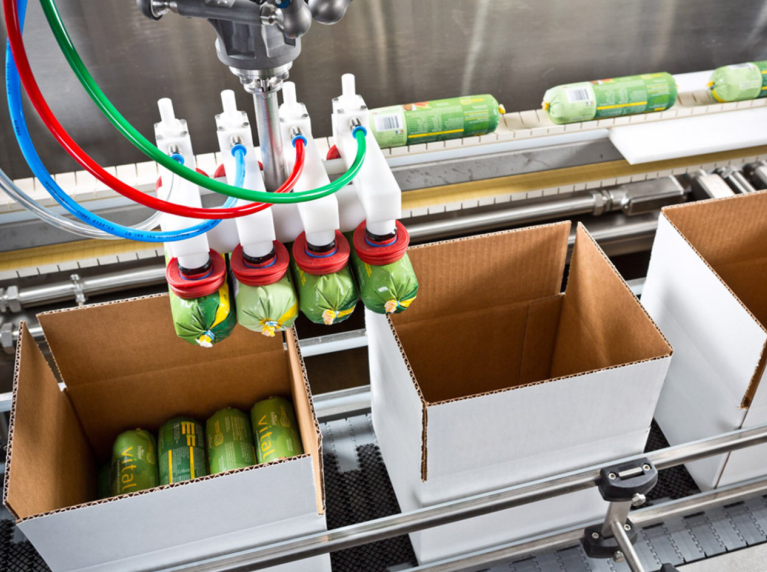An essential component of the supply chain, packaging guarantees that goods are safely moved to customers. Automation is becoming absolutely necessary as businesses desire better efficiency. At the center of this change are case packers and systems for case packing. These methods simplify the packing process, allowing producers to lower labor costs and increase efficiency and output. The value and advantages of these systems in contemporary packaging processes will be the main emphasis of this paper.
Understanding the Basics of Case Packers
Automated equipment called case packers load goods into cases or cartons. These technologies are meant to increase packing speed and precision, lowering the need for human labor. Case packers can load goods faster using robotic arms or mechanical conveyors, guaranteeing consistency and efficiency. In sectors including food and beverage, medicines, and consumer goods—where significant product volumes must be rapidly packed—this is especially important.
Types of Case Packing Systems Available
varied case packing systems are accessible to meet varied packaging requirements. Top-load, side-load, and robotic case-packing systems are three categories of systems these fall into. Depending on the product, manufacturing pace, and space availability on the packing line, every variety has special advantages. With automated solutions offering the best efficiency for large-scale manufacturing lines, case packing systems can be totally automated, semi-automated, or manual.
How Case Packers Improve Efficiency
Case packers mostly benefit from their capacity to improve packaging efficiency. These technologies let workers concentrate on higher-value activities by automating the process, therefore removing the need for labor-intensive chores. Operating at far faster speeds than hand packing, case packers help to lower downtime and raise general production. Manufacturers may thus satisfy increasing demand while keeping high levels of output, so guaranteeing a continuous flow of packaged goods ready for use.
Reducing Labor Costs with Automation
Case packing methods can help to drastically save labor expenditures. As automation replaces the monotonous packing chores, companies can free human resources for more specialized or difficult activities. This reduces the danger of mistakes brought on by hand handling in addition to personnel expenses. Operating continually, case packing technologies guarantee constant performance and remove the unpredictability sometimes observed in human labor.
Enhanced Product Safety and Accuracy
The enhanced accuracy in packaging that case packing systems and case packers provide also has advantages. By regularly packing items with great accuracy, automated solutions help lower the possibility of mistakes, including broken goods or misaligned cases. For sectors handling delicate or sensitive goods, this degree of accuracy is absolutely vital. Using these technologies helps producers guarantee that their goods are tightly packed and ready for delivery, therefore lowering the risk of damage during transit.
The Future of Case Packing Technology
The future of case packing systems and case packers seems bright as technology develops. Robotics, artificial intelligence, and machine learning innovations are supposed to improve these systems even more. Even more flexibility would be possible in future developments, allowing case packers to manage a larger spectrum of goods with different weights, sizes, and forms. Furthermore, helping to maximize packaging lines by integrating smart sensors and data analytics will be performance and efficiency in real-time improvement.
Conclusion
To sum up, case packers and systems have grown indispensable instruments in the contemporary packaging sector. By simplifying the packing process, these automated solutions lower labor costs while raising speed, accuracy, and productivity. These technologies help manufacturers guarantee their products are securely packed for distribution and increase efficiency, therefore benefiting them. For more on these systems, Packaging’s future will keep changing, and case packing technologies will be crucial in forming it.















